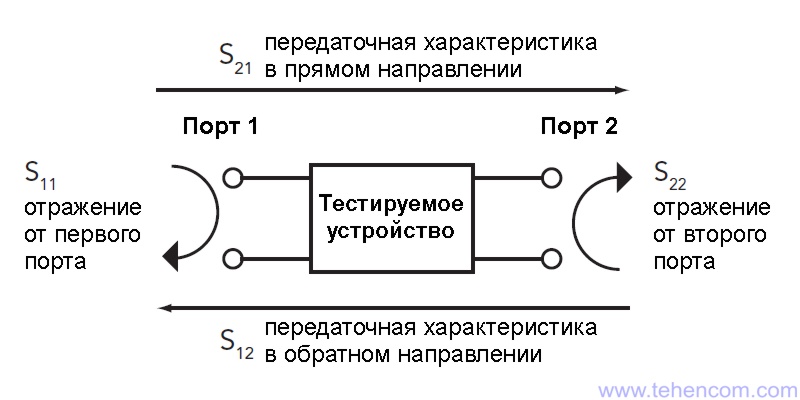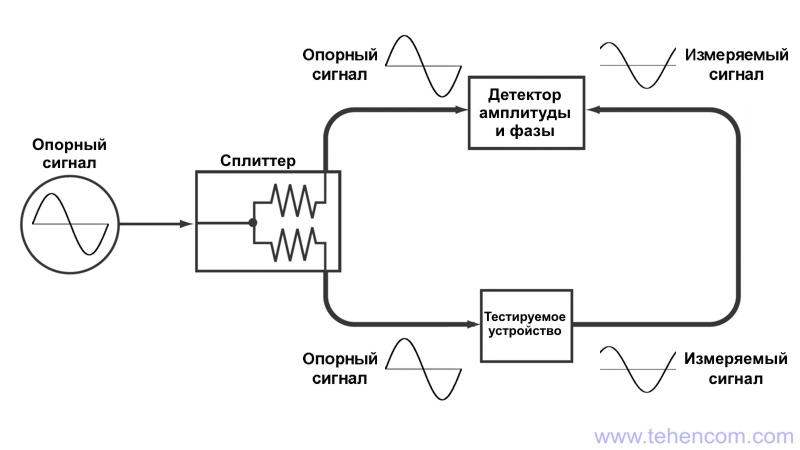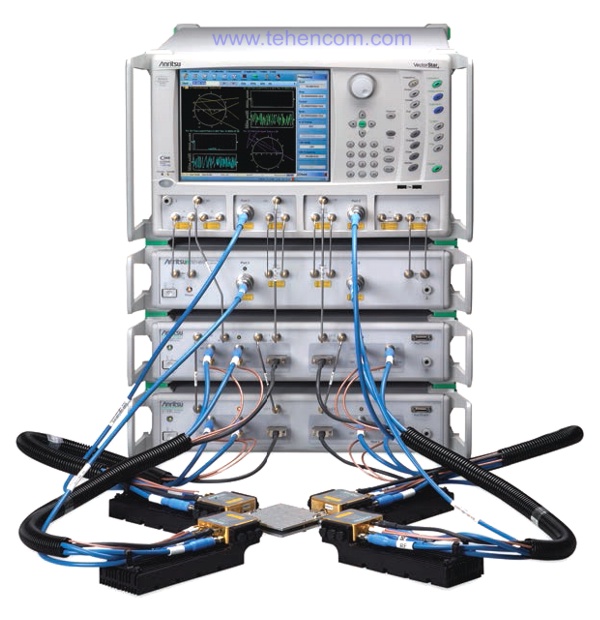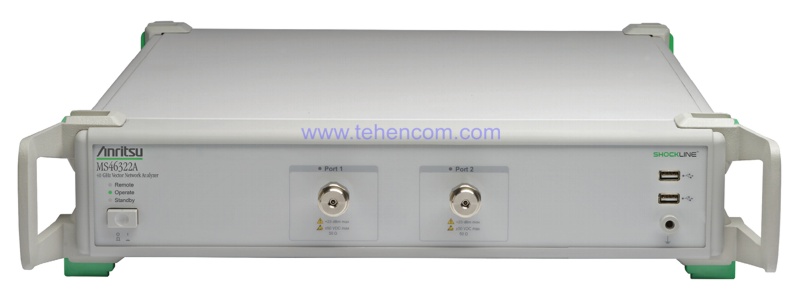What is a vector network analyzer

Brief introduction
When measuring the characteristics of active and passive radio devices (attenuators, amplifiers, etc.), as well as the properties of various materials (absorption and reflection of radio waves, dielectric constant, etc.), vector network analyzers are widely used. This material will help you get basic information about vector analyzers, their varieties and the tasks they solve.
General information
A vector network analyzer is an instrument that measures the transmission characteristics of a signal through a device under test and the reflection characteristics of a signal from its ports. These characteristics are called S-parameters. For two-port devices, the first port return characteristic is called S11, the forward transmission characteristic is called S21, the return transmission characteristic is called S12, and the second port reflection characteristic is called S22.

Each S-parameter contains amplitude-frequency (AFC) and phase-frequency (PFC) characteristics of the device under test in the corresponding direction. There are many standard ways to display measured S-parameters on a VNA screen. You can choose how to view the results: as a plot of SWR or return loss versus frequency, Smith chart, amplitude, phase, insertion attenuation or gain, group delay, etc.
As an example, this figure shows the screen of the Anritsu VNA Master MS20xxB series vector analyzer with the results of measuring the characteristics of a bandpass filter. The main filter parameters (S11 and S21) are shown in four detailed graphs. The measurements were carried out in the range of 1.75 - 2.05 GHz.

In order to make a measurement, the network analyzer applies a sinusoidal signal to the device under test and measures the signal that is reflected and the signal that has passed through the device. Both signals (reflected and transmitted) will differ in amplitude and phase from the test sinusoidal signal. If a network analyzer can only measure amplitude, then it called scalar. If the analyzer can measure both amplitude and phase, then it called vector. Almost all modern electrical circuit analyzers are vector, since it is the vector analyzer that allows you to most fully measure the characteristics of the device under test in a given frequency range.
This figure shows in simplified form how the VNA works in forward transfer characteristic mode (S21). A reference (reference) sinusoidal signal with a known amplitude and phase is applied to the device under test. After the signal passes through the device under test, its amplitude and phase will change. Further, the amplitude and phase detector determines how much the amplitude and phase of the measured signal differs from the reference one. Thus, the characteristics of the device under test at one frequency are determined. When measuring over a range of frequencies, the VNA repeatedly changes the frequency of the reference signal within the limits you specify. Of course, this is a greatly simplified description, but it illustrates the principle of operation well.

What are vector network analyzers used for?
Why do we need vector network analyzers? There are three tasks that they solve.
The main task is measurement of characteristics of active and passive radio devices such as: attenuators, amplifiers, filters, antennas, feeders, waveguides, frequency converters and many other components used in various circuits. Without exaggeration, we can say that vector network analyzers are one of the important factors in the development of modern telecommunications.

The second task is measurement of absorption and reflection of radio waves from various materials, such as structural elements of aircraft or missiles, special coatings and paints. To perform this type of measurement, both the transmitting and receiving antennas must be connected to the network analyzer ports. The photo below shows an example of measuring the effective area of reflection of radio waves of a test sample (located in the upper-left part of the photo). The measurement is performed using an Anritsu VNA Master MS20xxC series vector analyzer.

The third task is measurements in the food, chemical and medical industries. Due to its ability to measure the dielectric constant, quality factor and loss tangent of various substances, vector network analyzers are used to measure grain moisture, oil quality and many other important parameters that, at first glance, have nothing to do with radio measurements.
What are vector network analyzers
A classic vector analyzer is a functional, accurate and expensive device in a standard laboratory design, for example, the well-known series VectorStar from Anritsu, containing two-port and four-port analyzers with a frequency range of more than 100 GHz. This photo shows the exterior of the four-port VectorStar ME7838. A set of special cables and high-frequency adapters was used to connect to the measurement object.

The mid-range instruments are the compact analyzers of the ShockLine series with an upper frequency range from 4 to 40 GHz, available in small, convenient packages. They are ideal for most practical tasks in the laboratory. To control the operation of these analyzers, processing and displaying the measurement results, a personal computer is used. This photo shows the exterior of the ShockLine MS46322A with a frequency range up to 40 GHz.

If there is a need for measurements, both in the laboratory and at a remote site, it is very convenient to use portable instruments, such as a portable analyzer Anritsu VNA Master MS2038C, combining in one case a two-port vector network analyzer up to 20 GHz and a full-fledged spectrum analyzer also up to 20 GHz. Well, for cases with a minimum budget, economy series are produced with one or two ports, for example Anritsu MS20xxB or Pico Technology PicoVNA.
Video overview with basic information on vector network analyzers
In this video, we will look at general information about what vector network analyzers are, tell about their varieties, as well as what they are for and how they are used.
Additional information on this topic
We deliberately did not overload this article with the technical details of the design of vector network analyzers and a detailed description of their options. All this you can read in detail on the pages selected series of vector network analyzers. And to deeply understand this issue and improve your professional level, study the documents on basic theory of analysis of the parameters of electrical circuits. A separate article that explains how to calibrate a network analyzer is located here, and a guide to choosing the accessories necessary for its operation is located here.
If you need detailed pricing information or technical advice on choosing the best analyzer for your application, just call us or write to us at E-mail and we will be happy to answer your questions.


